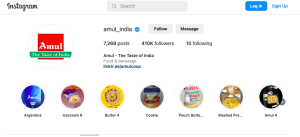Target Market
Target Market
Definition
Target market refers to a specific group of potential customers or consumers to a business or organisation that aims to sell its products or services.
Description
If a business does not define its target market, it may struggle to effectively reach and engage its intended audience, which can result in several negative consequences. With a clear understanding of its target audience, a business may save resources on marketing efforts that reach the right people or generate leads and sales.

This will lead to poor customer engagement and missed opportunities. It is identified based on various factors, such as demographic information (age, gender, income, education), psychographic information (lifestyle, values, personality), geographic location, and buying behaviour.
By understanding its market’s needs, preferences, and characteristics, a business can tailor its marketing and sales efforts to better appeal to and reach its intended audience.
Importance of Target Market
Defining and understanding your target market is crucial for the success of any business or organisation. Here are some reasons why it is essential:
- Efficient use of resources: By identifying your market, you can focus your marketing efforts and resources on the people most likely to be interested in your products or services. This can save you time, money, and effort, as you can only target people likely to become customers.
- Better customer understanding: By understanding your, you can learn more about their needs, preferences, and behaviors. This can help you create products and services that better meet their needs and develop more effective marketing campaigns to reach and engage them.
- Increased customer loyalty: By tailoring your products, services, and marketing efforts to your target market, you can create a stronger connection with your customers and build brand loyalty and trust.
- Competitive advantage: You can gain a competitive advantage by understanding your market and meeting its needs more effectively than your competitors.
- Improved return on investment (ROI): By focusing your marketing efforts on your target market, you can improve your ROI by generating more leads, conversions, and sales from a smaller, more targeted audience.
What are the types of target market?
A business can focus on several types of target markets, depending on its products or services, industry, and marketing objectives. Here are some of the most common types of target markets:
- Demographic: Focus on demographic characteristics such as age, gender, income, education, and occupation. For example, a business might target women aged 25-34 with a higher education degree and a certain income level.
- Geographic: Focus on specific geographic locations, such as a city, state, or region. For example, a business might target consumers in a particular zip code or neighbourhood.
- Psychographic: Focus on personality traits, values, and lifestyle characteristics. For example, a business might target environmentally conscious consumers who value sustainability.
- Behavioral: Target markets focus on consumer behaviours, such as past purchasing or browsing history. For example, a business might target consumers who have previously purchased similar products or shown interest in similar products or services.
- Firmographic: Focus on characteristics of businesses, such as industry, size, revenue, and location. For example, a company might target small to medium-sized businesses in the healthcare industry.
How to define the target market?
Defining your target market involves conducting research and analysis to identify the consumers or customers most likely to be interested in your products or services. Here are some steps you can take to define:
- Conduct market research: This may include surveys, focus groups, or other research methods to gather data on consumer behaviour, preferences, and demographics.
- Analyze your current customer base: Look at who purchases your products or services and identify common characteristics such as age, gender, location, and interests.
- Identify the benefits of your products or services: Determine what specific benefits your products or services offer and who might be most interested in those benefits.
- Analyze your competition: Look at who your competitors are targeting and how you can differentiate your products or services to appeal to a unique market segment.
- Create buyer personas: Based on your research and analysis, create detailed profiles of your ideal customers, including their demographics, behaviors, and needs.
- Test and refine: Once you have identified your target market, test your marketing efforts to ensure they resonate with your intended audience. Continually refine your market as you learn more about your customers and their preferences.
Benefits of defining target market
Defining your target market can provide numerous benefits for your business, including:
- A better understanding of customer needs: By defining your market, you gain a more profound experience of your customers’ needs, preferences, and behaviours, which can help you tailor your products or services to better meet their needs.
- More effective marketing: When you understand your market, you can create more targeted and relevant marketing campaigns that are more likely to resonate with your audience and drive conversions.
- Increased customer loyalty: By tailoring your products, services, and marketing efforts to your preferred market, you can build stronger customer relationships and foster greater loyalty and trust.
- More efficient use of resources: By focusing your marketing efforts and resources on your target market, you can save resources on customers who are unlikely to be interested in your products or services.
- Improved return on investment: By targeting your marketing efforts on your ideal customers, you can improve your ROI by generating more leads, conversions, and sales from a smaller, more targeted audience.
- Competitive advantage: You can gain a competitive advantage by understanding your target market and meeting its needs more effectively than your competitors.
Example
One example of an Indian brand that has effectively defined its target market is Amul. Amul is a dairy cooperative that produces and markets a range of dairy products, including milk, cheese, butter, and ice cream.

Amul has defined its target market as middle-class Indian consumers prioritising quality and affordability. The brand’s marketing efforts focus on this market, with ads featuring Indian families and celebrities consuming and endorsing Amul products.
Amul has also tailored its products and services to appeal to its target market. For example, the company’s products are priced affordably and come in a range of sizes and packaging to cater to its market’s varying needs and budgets.
Amul’s focus on its target market has helped the brand to become a household name in India, with a loyal customer base that trusts and values its products. In addition, Amul’s marketing campaigns, such as the iconic “Amul girl” advertising campaign, have also helped to build brand recognition and awareness among its target market.





We would love to have your opinion.